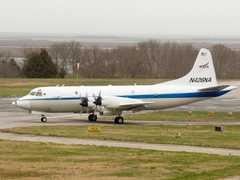The Airborne Cloud Radar (ACR) is an airborne W-band millimeter-wave cloud radar developed by the University of Massachusetts and NASA's Jet Propulsion Laboratory (JPL). ACR measures reflectivity and is used for profiling cloud vertical structures. It operates at a frequency of 95 GHz and has a beam width of 0.8 degrees. ACR has a range resolution of 38 m, 75 m, or 150 m.

Instrument Details
- Radar
- Earth Science > Spectral/engineering > Radar > Return PowerEarth Science > Spectral/engineering > Radar > Radar ReflectivityEarth Science > Spectral/engineering > Radar > Radar ImageryEarth Science > Spectral/engineering > Radar > Doppler Velocity
- Full Column Profile, Troposphere
- Variable
- 38m, 75m, 150m
- 95 GHz
- Currently unavailble
Steven J Dinardo, Deborah G. Vane
Steven J Dinardo
Jet Propulsion Laboratory, University of Massachusetts
Currently unavailable
Currently unavailable
Unpublished
 DeHavilland DHC-6-300 Twin Otter 23 Campaigns · 86 Instruments |  Atmospheric Radiation Measurement Enhanced Shortwave Experiment 1995—2000 Southern Great Plains, Southwestern United States 2 Deployments · 1 Data Product
| ||||||
 P-3 Orion 30 Campaigns · 153 Instruments | Wakasa Bay Experiment Wakasa Bay Experiment 2003 Wakasa Bay, Japan, Sea of Japan, Western Pacific Ocean 1 Deployment · 0 Data Products
|